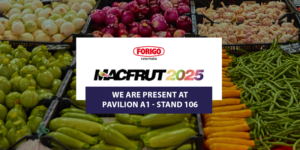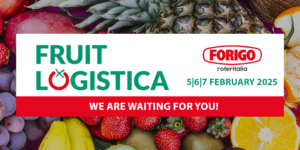News
Soil rolling: why is it useful and when does it take place?
News _ 30 NOVEMBER _2023
It is well known that market prices of arable land are now more and more volatile and with increasing production costs, especially when compared to those of the last years. The main cause of this price increase is mainly due to the price increase of nitrogen and diesel oil.
But how can we deal with this complex situation? The answer is simple: carrying out all crop operations- from the soil preparation to the harvest- with the utmost care.
Paying attention to those crop operations that, at a first sight may seem ordinary and useless- such as soil rolling- is vital.
How does soil rolling work?
Agronomy science give a clear definition of soil rolling. It consists of a job which completes the preparation of the seeding bed, necessary to make the cereal harvest (first and second harvesting phase) satisfying.
Many are the advantages connected to soil rolling, each one of them according to the type of rotating element adopted. Thanks to an optimal soil rolling we can obtain the clumps breakage after soil work and the insertion of the seed in the soil right after seeding.
Again, following soil rolling it is possible to ensure the reconnection of roots to the soil on meadows, especially after winter, as well as the levelling of land surfaces, for instance right after the creation of little ditch made by moles.
Which equipment is suitable for soil levelling?
Special protagonist of this type of soil work is the steam roller. This tool is made up of a support frame and one or more smooth cylinders, which make a light compression on the field which has already been worked, or often after the seeding process.
However, other tools are suitable for soil rolling, some of which have tailor-made features, related to their final purpose. An example of tool frequently adopted for this operation is the packer roller. The latter is made up of smooth or shaped discs, whose function is that of performing a more energic crumbling of the clumps on the surface.
But which are the differences between those two types of rollers? Let’s have a look at them in detail.
The main purpose of packer rollers is that of crumbling in an energic way the remaining clumps left after the passage of the plow. In particular, this type of roller can work well on clay and dry soils.
There is another type of packer roller- known as crumbling roller– consisting of rollers with splined surface mounted on two parallel shafts, one after the other. This special tool designed for soil rolling is suitable for works in hot- dry climates.
There are then steam rollers, whose main purpose is to break little clumps which remain in the soil after the work with power harrow, but not only. These rollers are useful specially to correct the excessive softness of soils and smooth the surface before the seeding.
Steam rollers are then adopted after the seeding-specially on compact soils- to fill the voids left from previous works. In such way, it is possible to bring the bring the soil particles into immediate contact with the seeds, in order to favor the germination and subsequent development of the plants.
Conclusion
In this short article we have seen what soil rolling consists of, when and why it is important to carry it out. Furthermore, we have presented the two types of machines that are most frequently used for this operation.
For decades Forigo Roter Italia has been designing and developing cutting-edge machines for optimal processing of any type of soil. We know how important it is for farms to always have the most performing equipment for soil care. Visit our catalog now and find out which Forigo product is the most suitable for you.
If you would like to request more information about our solutions, do not hesitate to contact us: our team will be happy to answer your questions and curiosities.

Research and Development Division of Forigo Roteritalia. Team of experts engaged in the study and analysis of the main agricultural and horticultural techniques used today. Knowledge combined with competence are the starting point for continuous improvement in a scenario of innovation and technological development.
Upcoming Exhibitions
Previous Exhibitions
30 MARCH 2025
Forigo at Agriumbria 2025: quality in soil preparation
07 FEBRUARY 2025
Forigo at Fruit Logistica 2025: towards more efficient agriculture













